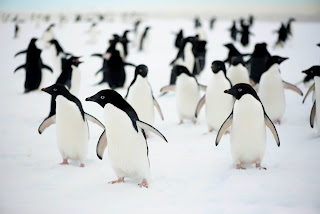The First Marine Park in the Antarctic
 |
| Around one-third of the world's Adélie penguins live in what will become Antarctica's largest Marine Protected Area (credit: A. Turney/Australasian Antarctic Expedition 2013-2014) |
This is a massive first step in the International Union for the Conservation of Nature’s call for 30% of the world’s oceans to be protected and is the first of several proposed marine protected areas off the Antarctic continent. A fantastic achievement that show’s how Antarctica can bring the world together. A huge congratulations to all!
If you would like to learn more there is an excellent article on The Guardian at https://www.theguardian.com/world/2016/oct/28/worlds-largest-marine-park-created-in-ross-sea-in-antarctica-in-landmark-deal


Comments
Post a Comment